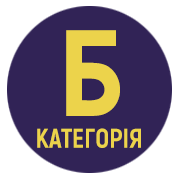MULTIMEDIA PRESENTATIONS AS A MEANS OF FORMING STUDENTS CLIP THINKING
DOI:
https://doi.org/10.32782/ped-uzhnu/2024-3-9Keywords:
clip thinking, multimedia presentation, learning to create presentations, features of information perception, formation of clip thinking.Abstract
It is difficult to imagine the modern educational process without the use of multimedia presentations. After all, it is multimedia presentations that are given preference when choosing a method of visualizing a lesson. They significantly improve students' assimilation of information when teaching a new topic. They also help systematize students' already existing knowledge and check the level of students' knowledge of the topic they have already studied. Therefore, it is important to understand and take into account all the principles of functioning, creation and the possibility of impact of multimedia presentations on the student. One of these characteristics of multimedia presentations can be the influence on the formation of clip thinking in the student. It is to investigate such possibilities that the article examines the characteristics of clip thinking, the reasons for its manifestation, and the peculiarities of information perception by a person with clip thinking. The properties of multimedia presentations are also investigated and errors in creating presentations of this type are given. Based on the mistakes made during the presentation, the justification of the impact of each individual error on the influence of various characteristics of clip thinking was carried out. This made it possible to single out the general reasons for the influence of multimedia presentations on the formation of clip thinking among students. The following causes of influence were highlighted: efforts to quickly absorb information without analyzing it; long-term simultaneous impact on all senses; presentation of information only on the basis of a picture; using theses in presentations, without explaining these theses; presentation of educational materials in the format of short information blocks; oversaturation of slides with visual and textual information. All these reasons arise only because of improper use of multimedia presentations during lectures. That is, by following the rules for designing and presenting visual materials, you can avoid the influence of multimedia presentations on the formation of students' clip thinking.
References
Васильєва Г. Киц Г. Використання мультимедіа в навчальному процесі вищої школи з метою підвищення якості освіти. Нова педагогічна думка. 2013. (1.1). С. 281–283.
Годлевська К.В. Особливості використання мультимедіа презентацій у процесі професійної підготовки майбутніх вчителів початкових класів. Наукові записки Вінницького державного педагогічного університету ім. Михайла Коцюбинського. Серія: Педагогіка і психологія. 2013. (40). С. 182–186.
Дементієвська Н. П., Морзе Н. В. Проектування, створення та використання навчальних мультимедійних презентацій як засобу розвитку мислення учнів [Електронний ресурс]. Інформаційні технології і засоби навчання. 2007. № 1 (2). Режим доступу до журналу : http://journal.iitta.gov.ua/- index.php/itlt/article/view/284
Жалдак М. І., Шут М. І., Жук Ю. О., Дементієвська Н. П., Пінчук О. П., Соколюк О. М., Соколов П. К. Мультимедійні системи як засоби інтерактивного навчання: посібник. Жук Ю. О. (ред.) Київ: Педагогічна думка. 2012. 112 с.
Іжевська, О. Особливості навчання дітей з кліповим мисленням засобами ІКТ. Педагогічна освіта: Теорія і практика. Психологія. Педагогіка, 2019 (31). 91–95. вилучено із https://pedosvita.kubg.edu.ua/index.php/journal/article/view/253.
Краліна Г.С. Технології мультимедіа в освітньому процесі: переваги, недоліки, перспективи використання. Молодий вчений. 2019. (9(1)). С. 1–5.
Літвінова М.Б. Досвід діагностування кліпового мислення. Збірник наукових праць [Херсонського державного університету]. Педагогічні науки. 2017. 76(3). С.140–145.
Соломко С.Т. Використання презентацій на лекційних заняттях. Оновлення змісту, форма та методів навчання і виховання в закладах освіти. 2012. (5). С. 77–85.
Удовицька Т. А. «Кліпове мислення» молоді: особливості прояву в процесі навчання (до постановки проблеми). Вища освіта України: теорет. та наук.-метод. часопис. Дод. 1. Вип. 31. VIII(50). Ін-т вищої освіти НАПН України. 2013. С. 407–416.
Шатирко Л.О. Психологічні особливості розвитку дитини в умовах викликів сучасного освітнього простору. Інноваційні трансформації в сучасній освіті: виклики, реалії, стратегії. І. М. Савченко, В. В. Ємець (ред.). (с. 342). 2021, Київ : Національний центр «Мала академія наук України».







